Victorian Garden Ideas: Create a Charming Outdoor Haven
Rediscovering Victorian garden ideas can add a touch of historical charm to your outdoor spaces. This era, known for its creativity and fascination with exotic plants, offers numerous ways to transform your garden into a vintage masterpiece. From lush flower beds to elegant pathways, Victorian designs can make your garden a delightful haven.
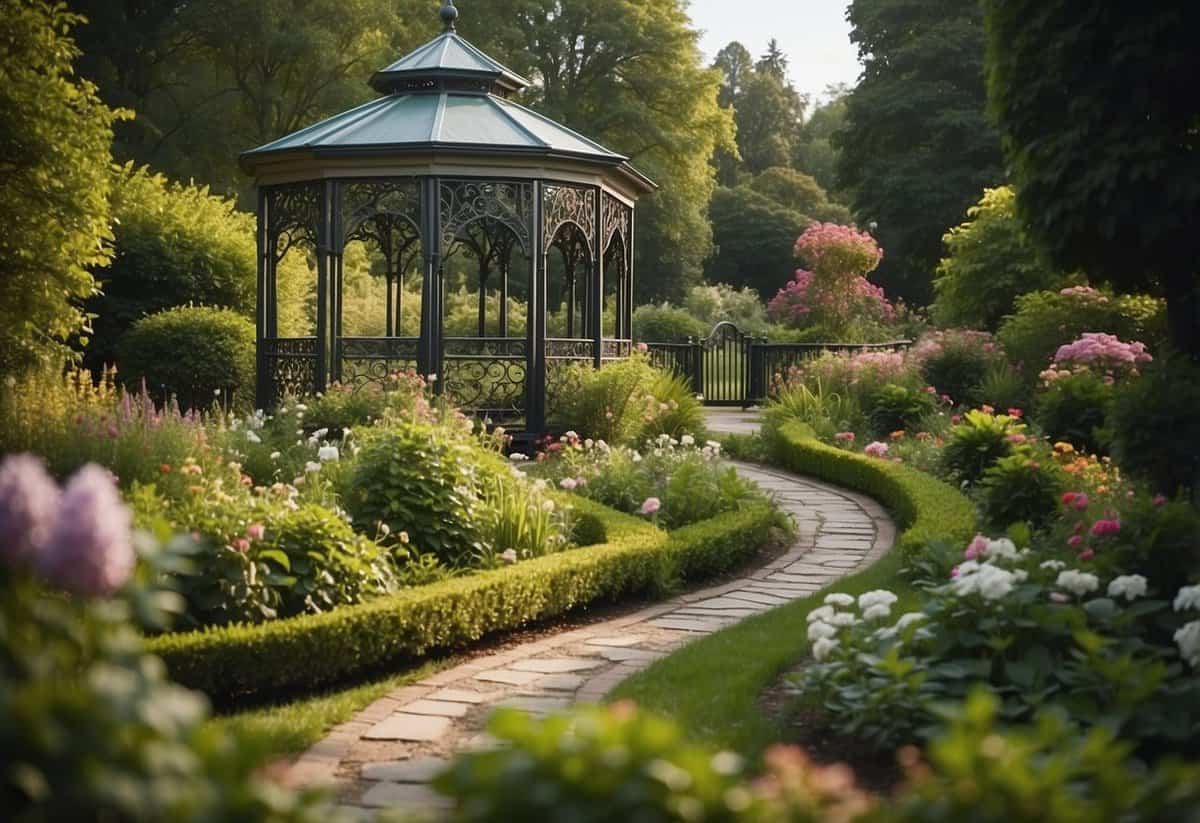
What makes Victorian garden ideas so appealing today is their unique blend of natural beauty and timeless elegance. These gardens not only reflect the Victorian passion for horticulture but also provide a serene escape from the hustle and bustle of modern life. Whether you have a small yard or a large estate, Victorian garden concepts can enhance the aesthetic and tranquility of your home.
1) Heirloom Roses

Heirloom roses are a charming addition to any Victorian garden. These roses, also known as old-fashioned roses, are prized for their beauty and fragrance.
You can find varieties like the Rosa Baronne Prévost, which dates back to 1842 and offers a lovely old rose scent.
Another popular choice is the Old Bourbon Rose ‘Zéphirine Drouhin’ with its large, double blooms and vibrant pink flowers.
2) Boxwood Hedges
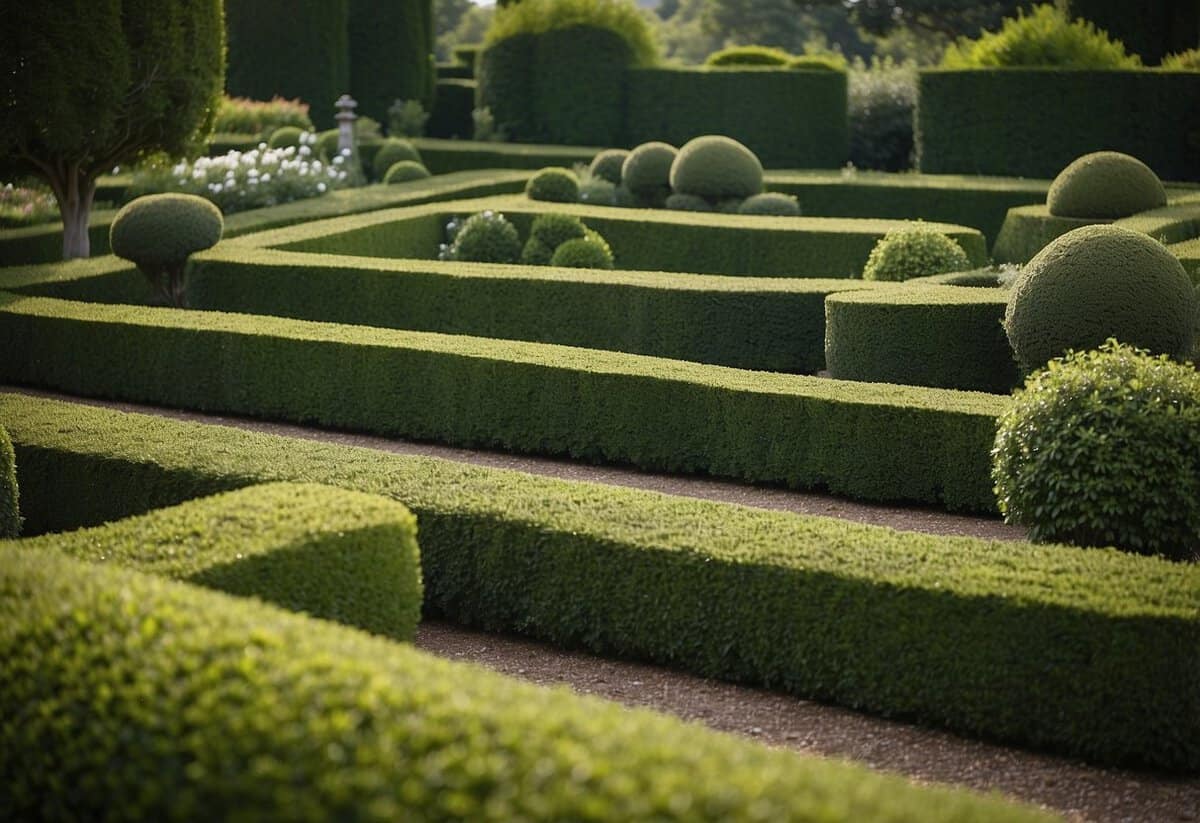
Boxwood hedges can give your Victorian garden a classic and formal look. These evergreen shrubs are known for their dense, green foliage that lasts all year round. They can be shaped into hedges, borders, or even intricate topiaries.
Boxwood can handle both full sun and partial shade, making them versatile for various spots in your garden. They require minimal maintenance and are perfect for creating defined paths or enclosed garden rooms.
Artificial boxwood options, like the Nearly Natural Boxwood Triple Ball Tree from Walmart, can be a good alternative if you want a low-maintenance choice that still looks lush and green.
3) Wrought-Iron Garden Furniture

Wrought-iron garden furniture adds a classic touch to your Victorian garden. The designs often include intricate details and elegant patterns. You can find Victorian wrought iron garden furniture like benches, chairs, and tables that bring sophistication to your outdoor area.
This type of furniture is durable and can withstand various weather conditions. A wrought iron garden patio bench or settee can be a beautiful focal point in your garden. It’s perfect for creating a relaxing spot to enjoy your surroundings.
4) Victorian Glass Greenhouses

Victorian glass greenhouses are a charming addition to any garden. They often have high peaked roofs and large glass panels that extend to the ground. These features provide plenty of sunlight for your plants.
You can use a glass greenhouse for growing various plants like tomatoes, aubergines, and even lemon trees. The style adds a touch of elegance to your garden while offering a practical growing space.
5) Lavender Borders

Lavender borders are a lovely way to frame your garden paths. Their purple blooms add color and scent, making your walks more enjoyable.
Planting lavender on both sides of a path creates symmetry. This balance gives a neat, professional look.
Lavender thrives in well-drained soil and sunny spots. It’s also low-maintenance and attracts pollinators.
6) Circular Garden Beds
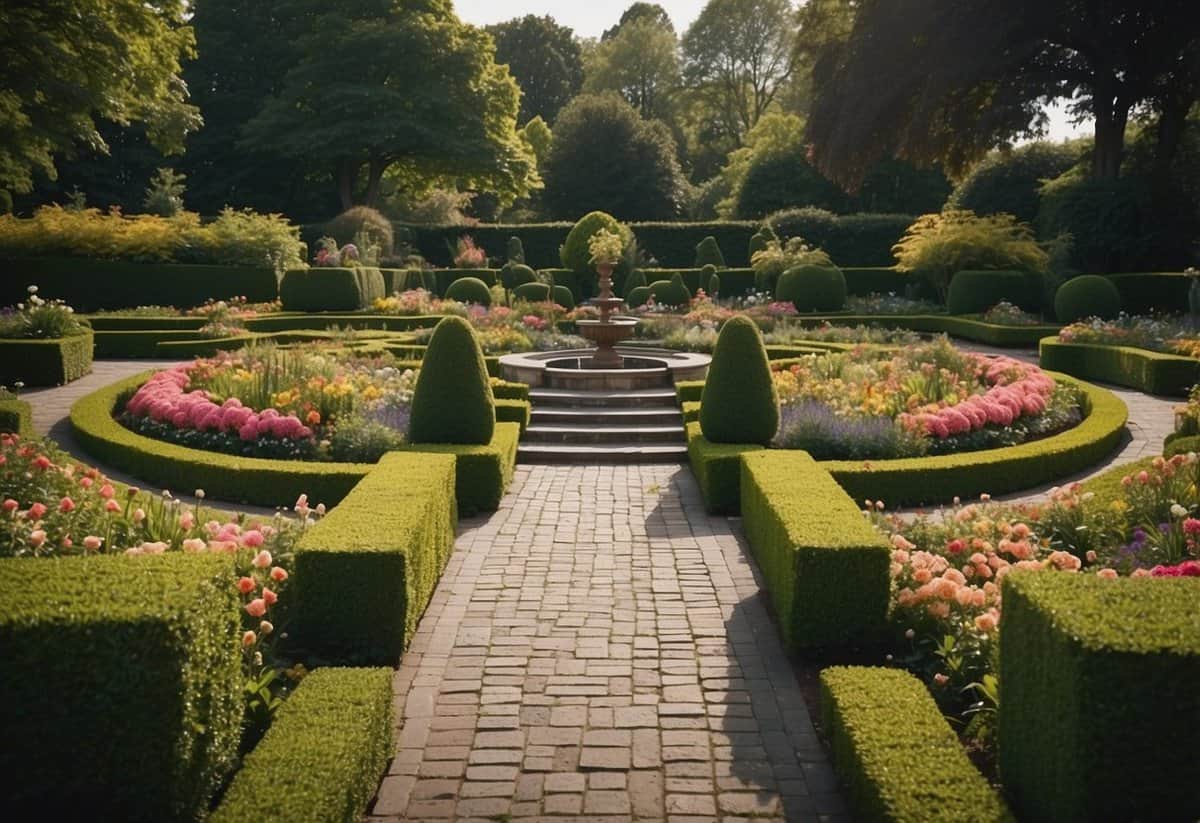
You can add charm to your Victorian garden with circular garden beds. These beds provide a focal point and are perfect for showcasing beautiful flowers.
Try using shade-loving Hostas for a lush, green effect. If you prefer a more vibrant look, consider incorporating tropical plants. Circular garden beds are versatile and can fit into various garden sizes and spaces.
7) Victorian Sundials
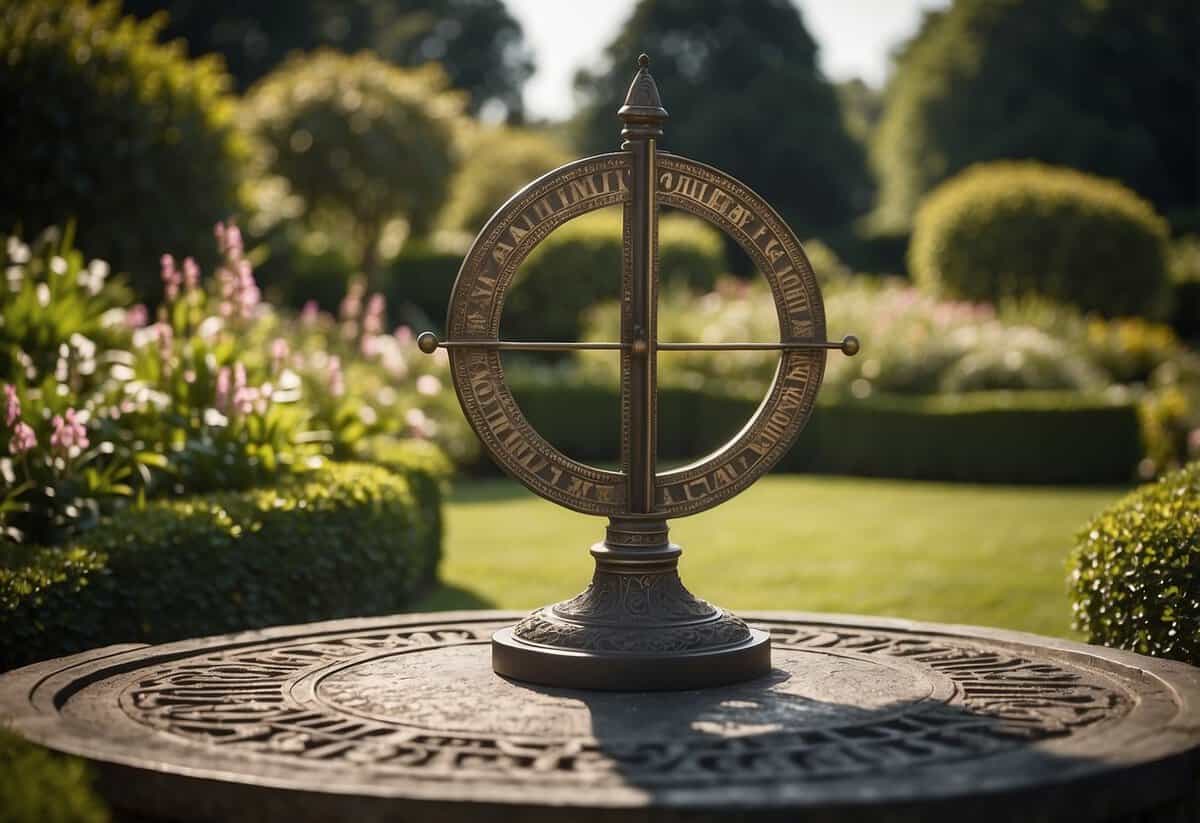
Victorian sundials are a beautiful addition to any garden. They were used not only to tell time but also as decorative elements.
You can find sundials made of brass, iron, or stone. They often feature intricate designs that fit well with other Victorian garden elements.
Incorporate a sundial into a flower bed or on a pedestal. This adds both charm and function to your garden.
8) Topiary Sculptures

Topiary sculptures bring a magical touch to any garden. They create shapes like animals, spirals, and even geometric forms. You can start simple with cubes or balls.
These living sculptures can act as focal points. They draw the eye and add interest to garden pathways. For more inspiration on topiary art, check out this guide on creating topiary.
9) Clematis Climbing Vines
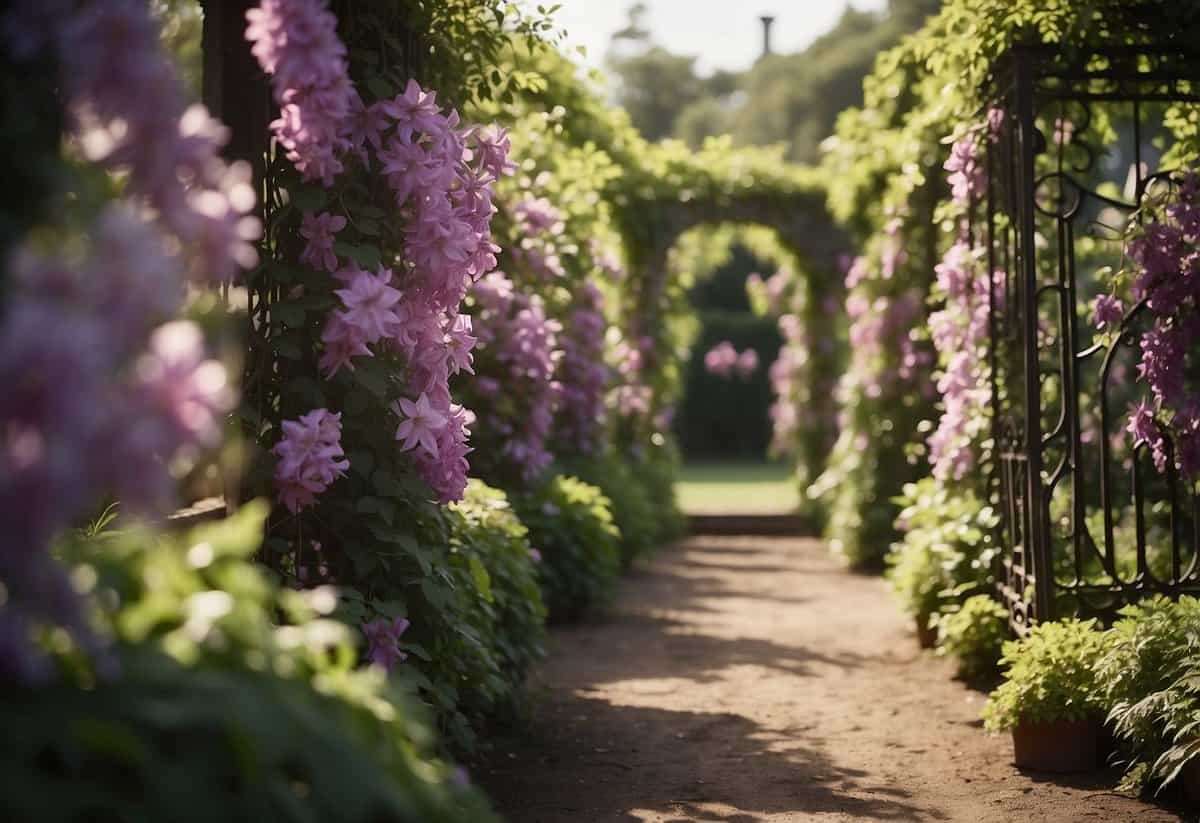
Clematis climbing vines can add a touch of elegance to your Victorian garden. Their vibrant flowers and lush foliage create a stunning visual effect.
Consider using a freestanding trellis made from cedar wood to support the vines. For a more durable option, try a wrought iron trellis, which can withstand the elements.
Clematis vines also look beautiful when paired with other garden plants, like hydrangeas. They can climb on a variety of supports, such as wooden fences or brick walls. This makes them versatile and easy to incorporate into your garden design.
10) Ornamental Ponds
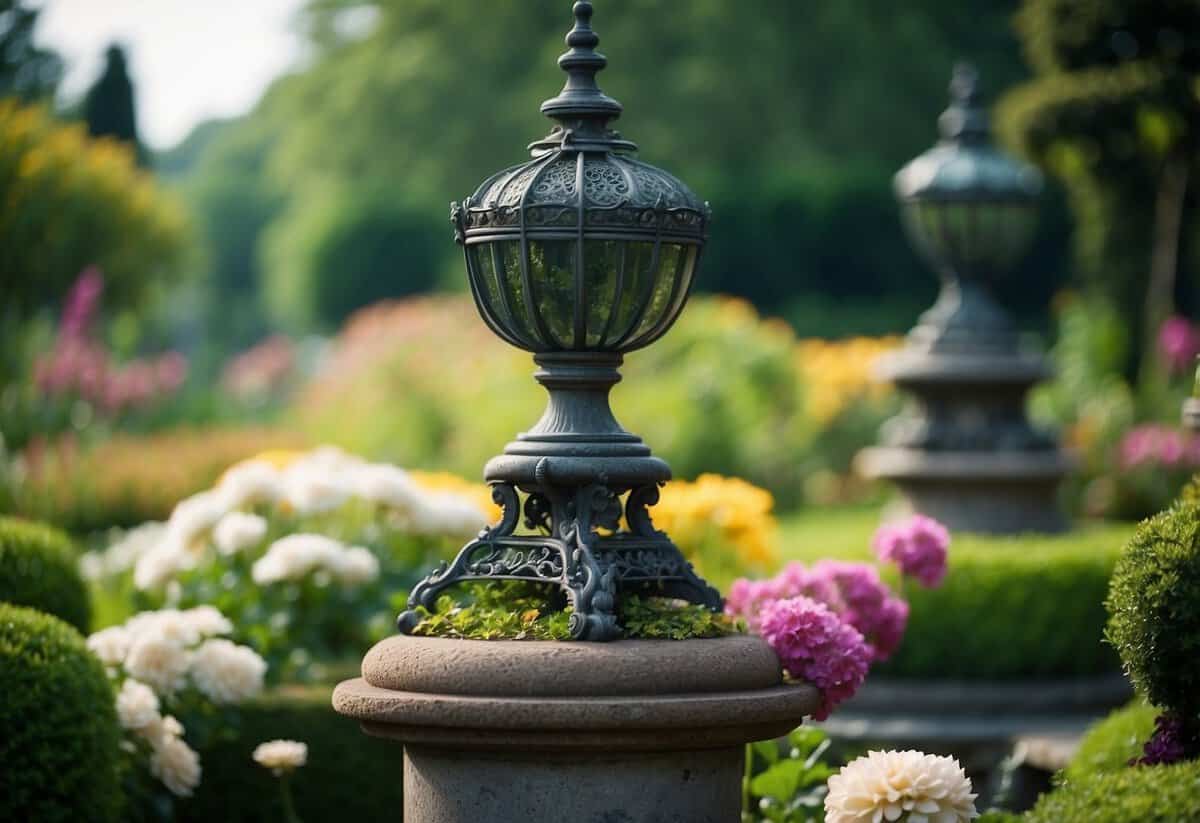
Adding a pond to your Victorian garden can create a peaceful retreat. These ponds often feature beautiful decorative stones and full-sun settings, giving the space a classic look. Ornamental ponds can also include plants like dwarf water lilies.
You can enhance your pond with stepping stones or even a small waterfall. These features add visual interest and create a soothing atmosphere.
Design Principles of Victorian Gardens

Victorian gardens are known for their elegance and intricacy. Two important principles that guide their design are symmetry and balance, as well as thoughtful color schemes and plant selection.
Symmetry and Balance
Symmetry is a hallmark of Victorian garden design. Pathways, flowerbeds, and features are arranged to create a sense of harmony. This can involve mirroring plant beds on either side of a central path or placing statues and fountains symmetrically.
Balance is achieved through careful planning, ensuring that no part of the garden feels heavier or more crowded than another. This may involve using similar plants and structures on both sides or balancing a large tree with several smaller shrubs.
Color Schemes and Plant Selection
Color in Victorian gardens is both bold and well-thought-out. Bright, contrasting colors like red, yellow, and blue are often used to create visual interest.
Choosing the right plants is critical. Popular choices include exotic plants, grown in glasshouses, as well as hardy plants like junipers that provide year-round appeal. Colorful blooms like roses and peonies are also common.
Mixing different textures and heights is another technique, combining tall trees with low-growing flowers to create depth and layers.
Key Features of Victorian Gardens

Victorian gardens are known for their beauty and elegance. They often include decorative structures and enchanting water features that create a tranquil and picturesque setting.
Ornamental Structures
Victorian gardens often feature ornamental structures like gazebos, pergolas, and arbors. These elements add charm and a sense of romance to the garden. Gazebos can serve as focal points, providing a place to sit and enjoy the surrounding beauty.
Pergolas are used to create shaded walkways covered in climbing plants such as roses or wisteria. These structures not only offer shade but also add vertical interest and can divide different garden areas elegantly. Arbors, often placed at garden entrances, invite you into the space with an archway of blooming flowers.
Adding cast iron benches and decorative fencing can further enhance the Victorian aesthetic. These structures are not only functional but also contribute to the vintage charm and intricate detailing typical of Victorian design.
Water Features
Water features are essential in Victorian garden design. Fountains were highly popular, often placed at the center of a garden to draw attention. The gentle sound of flowing water adds an element of serenity and can create a calming atmosphere.
Ponds stocked with fish or adorned with water lilies were also common. They provide a habitat for wildlife and add a reflective, tranquil quality to the garden. Birdbaths are another feature that attracts birds, making the garden come alive with movement and sound.
For a more elaborate look, cascading waterfalls can be added, enhancing the garden’s natural feel. These water features, whether grand or simple, play a crucial role in the overall ambiance of a Victorian garden, turning it into a peaceful retreat.







